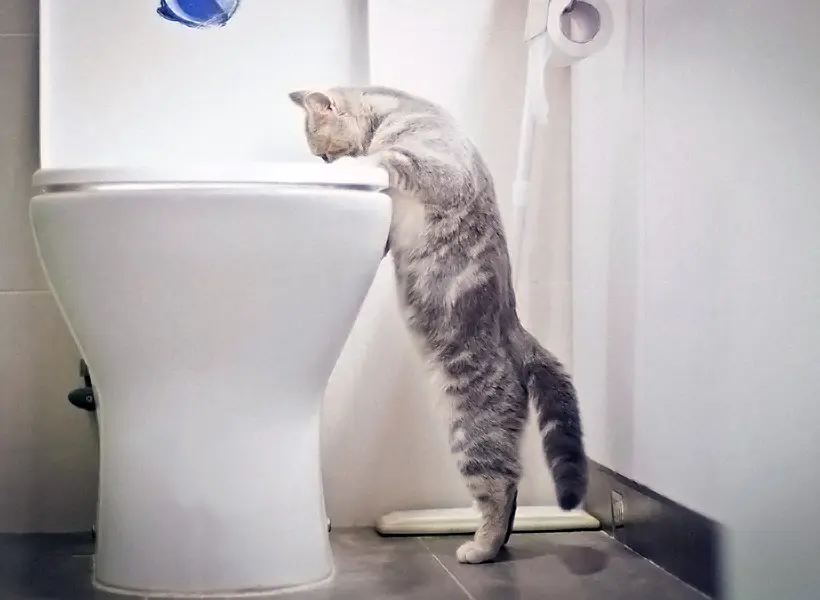Each person seems to have their own individual perception involving How to Dispose of Cat Poop and Litter Without Plastic Bags.
Intro
As feline owners, it's vital to be mindful of just how we throw away our feline pals' waste. While it might seem hassle-free to flush feline poop down the commode, this method can have destructive consequences for both the atmosphere and human wellness.
Environmental Impact
Purging pet cat poop presents damaging virus and bloodsuckers right into the supply of water, presenting a substantial threat to marine ecosystems. These pollutants can negatively impact aquatic life and concession water quality.
Wellness Risks
Along with environmental problems, flushing feline waste can also posture health and wellness dangers to human beings. Pet cat feces might have Toxoplasma gondii, a bloodsucker that can trigger toxoplasmosis-- a potentially extreme ailment, especially for pregnant females and people with weakened body immune systems.
Alternatives to Flushing
Luckily, there are safer and extra accountable means to take care of feline poop. Take into consideration the complying with choices:
1. Scoop and Dispose in Trash
The most typical method of taking care of cat poop is to scoop it into an eco-friendly bag and throw it in the trash. Make sure to make use of a dedicated trash scoop and take care of the waste promptly.
2. Use Biodegradable Litter
Choose naturally degradable feline clutter made from products such as corn or wheat. These trashes are eco-friendly and can be securely taken care of in the garbage.
3. Hide in the Yard
If you have a lawn, think about burying cat waste in a designated location far from vegetable yards and water resources. Make sure to dig deep enough to prevent contamination of groundwater.
4. Mount a Pet Waste Disposal System
Purchase a pet garbage disposal system particularly designed for pet cat waste. These systems utilize enzymes to break down the waste, reducing odor and environmental effect.
Final thought
Responsible animal possession expands past supplying food and shelter-- it additionally involves appropriate waste administration. By avoiding flushing cat poop down the commode and selecting alternate disposal approaches, we can minimize our ecological impact and secure human health.
Why Can’t I Flush Cat Poop?
It Spreads a Parasite
Cats are frequently infected with a parasite called toxoplasma gondii. The parasite causes an infection called toxoplasmosis. It is usually harmless to cats. The parasite only uses cat poop as a host for its eggs. Otherwise, the cat’s immune system usually keeps the infection at low enough levels to maintain its own health. But it does not stop the develop of eggs. These eggs are tiny and surprisingly tough. They may survive for a year before they begin to grow. But that’s the problem.
Our wastewater system is not designed to deal with toxoplasmosis eggs. Instead, most eggs will flush from your toilet into sewers and wastewater management plants. After the sewage is treated for many other harmful things in it, it is typically released into local rivers, lakes, or oceans. Here, the toxoplasmosis eggs can find new hosts, including starfish, crabs, otters, and many other wildlife. For many, this is a significant risk to their health. Toxoplasmosis can also end up infecting water sources that are important for agriculture, which means our deer, pigs, and sheep can get infected too.
Is There Risk to Humans?
There can be a risk to human life from flushing cat poop down the toilet. If you do so, the parasites from your cat’s poop can end up in shellfish, game animals, or livestock. If this meat is then served raw or undercooked, the people who eat it can get sick.
In fact, according to the CDC, 40 million people in the United States are infected with toxoplasma gondii. They get it from exposure to infected seafood, or from some kind of cat poop contamination, like drinking from a stream that is contaminated or touching anything that has come into contact with cat poop. That includes just cleaning a cat litter box.
Most people who get infected with these parasites will not develop any symptoms. However, for pregnant women or for those with compromised immune systems, the parasite can cause severe health problems.
How to Handle Cat Poop
The best way to handle cat poop is actually to clean the box more often. The eggs that the parasite sheds will not become active until one to five days after the cat poops. That means that if you clean daily, you’re much less likely to come into direct contact with infectious eggs.
That said, always dispose of cat poop in the garbage and not down the toilet. Wash your hands before and after you clean the litter box, and bring the bag of poop right outside to your garbage bins.
https://trenchlesssolutionsusa.com/why-cant-i-flush-cat-poop/

Do you like reading up on Can You Flush Cat Poo or Litter Down the Toilet?? Post feedback down below. We'd be glad to hear your thinking about this article. In hopes to see you back again soon. If you appreciated our article if you please do not forget to share it. We thank you for reading our article about Don’t flush cat feces down the toilet.
Click Here